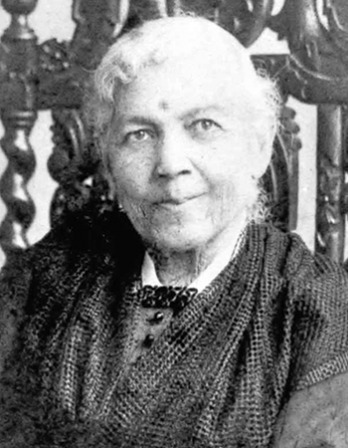Leslie Hu remembers the very day, a Thursday in March 2020, when her school, Dr. Martin Luther King Jr. Academic Middle School, received word from the district office that Friday would be the last day the school would be physically open until further notice, because of the coronavirus epidemic. Without waiting for guidance, she and a few other staff members “immediately went into overdrive to connect with as many families as possible,” she tells me.
Working late into the evening, the staff members made “wellness calls” to deliver messages of care and reassurance. “Our message was ‘We are not abandoning you. What do you need? We still care,’ ” recalls Hu, a community-school coordinator and social worker.
The next day, they enlarged the circle of callers to include other staff members. By the following Wednesday, their wellness calls had reached nearly all of the 460 families with children at the school.
The outreach effort then expanded to more in-depth interview calls to stay connected to families handling the emergency. Within a month, they had reached out to every family.
Their efforts yielded critical information about how families were affected by the pandemic and what kinds of challenges they faced—such as whether a breadwinner had lost a job, whether the household had access to the internet, or whether the family was facing eviction. They also conveyed critical information to help families navigate the crisis, including how to pick up Wi-Fi hot spots and devices from the district; where there were open food pantries; and which local nonprofit organizations and community agencies were providing support for those dealing with financial difficulties and mental health issues.
“We knew there would be certain things our families probably needed,” Hu recalls. “But we didn’t make assumptions. We knew to ask open-ended questions.”
This outreach effort was so successful that, according to an article by the California Federation of Teachers, the San Francisco Board of Education used it as a model to create a district-wide plan to establish permanent “coordinated care teams” for reaching out to families and checking on their well-being.
Looking back, Hu describes their response as something that came about intuitively. She and her colleagues didn’t wait for directives from higher-ups. Instead, they relied on a well-practiced behavior of “cocreating,” as she put it, with colleagues in a school where leadership responsibilities are shared rather than hierarchical.
The actions Hu and her colleagues took are not unique—stories of educators and staff members rising to address the challenges of the coronavirus pandemic abound. But rarely do these reports delve into what took place before the crisis began. They do not mention, for example, whether there was a particular culture inculcated among staff members that guided how they responded, or whether there were structures and systems put in place beforehand that were set in motion when the crisis emerged.
“The work that led to our wellness calls was due to an effort that took years,” Hu says, referring to the school’s decision in 2014 to transform its culture and operations to align with an approach known widely as community schools.
As Hu explains, “All the work the model requires you to do to build systems and structure to communicate with families paid off.”
So far in 2022, media outlets have promoted a narrative that the bonds between families and their public schools have become more strained than ever before, and that parents have taken on a more adversarial relationship with schools. Hu’s school, and others like it that are guided by the community-school model, may show what a successful relationship between parents and schools could look like.
When Hu was studying for a master’s degree in social work, she became motivated to work with families in settings where they felt most comfortable, which she felt would be in the schools. Seeking her first job as a social worker, she tried the San Francisco school district, and fortunately, it was hiring.
Hu “became riveted” with community schools because, she says, their approach builds “the infrastructure that embeds values in the fabric of the school.”
What are some of those values? One, Hu maintained, is the importance of making sure kids feel they’re cared for. Another is to cultivate a culture of listening to students and families, and then building and attending to a system that promotes ongoing communication among the school, the families, and the surrounding community.
That may sound easy, but it’s not. “It’s a shift in thinking about…families having a partnership role in the school,” Hu says. “It’s about having the mind-set to be attuned to the needs of the whole child and have a community culture that supports this. This mind-set has to be cultivated.”
Paula Oxoby-Hayett, a community-school coordinator at Enos Garcia Elementary School in Taos, New Mexico, echoes a similar belief when she describes the strengths her school had that helped it weather the Covid-19 storm.
“There’s a tendency to want to jump in with solutions,” she says. “But it’s important to come to conversations with fresh eyes and open ears. And people with skin in the game must be part of any solution.”
Though her school, located in a small town, has concerns and interests that may differ greatly from those of a school in a big city like San Francisco, Oxoby-Hayett’s description of the family-engagement process entailed in the community-school approach closely matches what Hu describes.
When Oxoby-Hayett’s school chose to take up the community-school model in 2019, it took the customary first step of conducting an assessment that included reaching out to parents via emails, texts, and phone calls.
“Teachers don’t always have time to have these sorts of conversations with parents, to ask families, ‘What’s your vision?’ ” Oxoby-Hayett explains. But the community-school approach puts in place an on-site coordinator and the structures for enabling those conversations to take place.
In the needs assessment, Oxoby-Hayett recalls, “We made a conscientious effort to ask, ‘How would you like to contribute?’ ” What they heard was that parents wanted to be more engaged in the daily workings of the school.
Consequently, she adds, “Our approach has been to build from within. We don’t have the [external] infrastructure to lean on, so we have to build it ourselves.”
Ultimately what that entailed was to match parents’ desire for more engagement with opportunities to volunteer for the school. Currently one parent is teaching Spanish in the after-school program. A student’s dad is coaching soccer. One student’s uncle is coaching basketball, and another’s mom runs the Spanish club.
The school also enlisted parents and community members to serve as “family navigators,” who help make calls to families to check in with them, distribute devices for connecting to the internet, and make sure families have books and other materials they need.
The family navigators proved to be indispensable sources for outreach and parent contact when the pandemic struck.
“Community schools…are about system transformation,” Anne Egan, a consultant working with schools in Truth or Consequences, New Mexico, says.
Truth or Consequences, a town of fewer than ten thousand people, is situated on the Rio Grande, in the southeastern part of the state.
Sierra County “has been losing jobs and population for two decades,” she tells me. Substance-use disorders, as well as high incarceration rates, are rife in the community. The county’s poverty rate is 22 percent, well above the state’s overall rate of 18 percent.
“In the fall of 2020, we were struggling to connect with families” that were reluctant to return to in-person learning, Egan recalls. When nearly eighty students did not show up when schools reopened, the principal and the community-school coordinator called, texted, and emailed every family and then began going door-to-door.
The message to families, Egan says, was consistent: “We know this is hard. What are your problems? How can we help?” Eventually, the missing students came back before head counts had to be sent to the state to secure the school’s per-pupil funding.
Through her work helping schools implement the community-school approach, Egan has learned that there has to be shared leadership, in which stakeholders in the school and the surrounding community are represented and the focus is on creating equity-based opportunity.
“This goes against the old, bureaucratic ways of running schools,” she says. “It takes time, and it’s hard, but it’s how the magic happens.”
In the old way of doing school, teachers, by default, served as frontline staff, providing mental and physical health services. But partnerships that develop in the community-school approach create a synergy that relieves teachers of that work and keeps them focused on what they do best—teaching.
Finally, according to Egan, there has to be trust. Local school councils should be open for a wide spectrum of people to participate. People need to be invited to help with school operations and programs. Schools should ask people what they want and then listen to them. They should show they care about students by including them in meetings and conversations.
Then, over time, trust comes about when people see that a school has a history of saying what it is going to do and then doing it.
From “Community Schools Could Fix a Major Problem in Education,” The Progressive, March 2, 2022. Copyright © 2022 by Jeff Bryant. Used with permission of The Progressive.
From an article in The Progressive. Bryant’s reporting focuses on investigating charter schools, voucher programs, and other school-privatization efforts. According to a 2020 study by the RAND Corporation, New York City public schools that adopted the community-school model saw declines in absenteeism and disciplinary incidents and increases in on-time grade progression and high school graduation rates. The Biden administration has proposed increasing funding for community-school programs by $400 million; California has launched an effort to spend $3 billion to convert thousands of schools to the model.
Back to Issue



